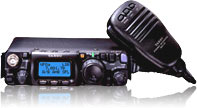.JPG) |
| The disconnected shaft is just to the RHS of the YIG oscillator |
In my days as a young engineer (that's a long time ago) one of the "modern" pieces of test gear on the bench was an
HP8640B signal generator. I used one, on and off, throughout my RF design days in the 1970s and 1980s.. On retirement I managed to borrow one on indefinite loan from a colleague who managed to buy some of the old stock items when well past their useful lifetimes. This has worked OK for several years but a few months ago the fine tune control shaft fell off inside the box. It is not broken, it just became disconnected. Today I attempted to fix it and expected it to be easy. I could see that it was basically 2 pieces of metal connected with a small plastic part. But can I get at it? Can I heck!
You forget how USELESS 1960s and 1970s designs were in terms of ease of manufacture and repair. To get at the part, it looks like you have to take apart about 1 zillion screws and plastic cog wheels, and all because the designer didn't put the control about 5mm to the left, in which case none of these complicated mechanical arrangements would have been needed! These days, where competition, manufacturing and repair costs matter, the design would not be so
unnecessarily complicated. After trying to join the 2 pieces together for nearly an hour, I gave up. In the coming days I'll return the 8640B to its owner and I expect he'll
have the manual and the patience to fix it. My eyesight is also not as
good as it was and that didn't help.
The tiny
Elecraft XG3 signal generator (about the size of a pack of cards) would do all I need (and a lot more) and I think will be a good investment. It also weighs about 1/100th the weight of the 8640B. I am not after a signal generator with professional calibration and noise floor performance, just a simple way of checking the performance of simple receivers.
Unless absolutely necessary KISS -
keep
it
simple
stupid. This applies as much to professional gear as to amateur gear. Don't make life harder than it need be.



.JPG)

 Mark explained that they are working to the tightest of margins these days and the price is basically set by Yaesu. He also pointed out that compared with 25 years ago we are getting a lot more for our money reminding me that back then the same money would have bought just a 2m FT290, whereas now we get a multi-band HF/VHF/UHF, multi-mode transceiver.
Mark explained that they are working to the tightest of margins these days and the price is basically set by Yaesu. He also pointed out that compared with 25 years ago we are getting a lot more for our money reminding me that back then the same money would have bought just a 2m FT290, whereas now we get a multi-band HF/VHF/UHF, multi-mode transceiver.